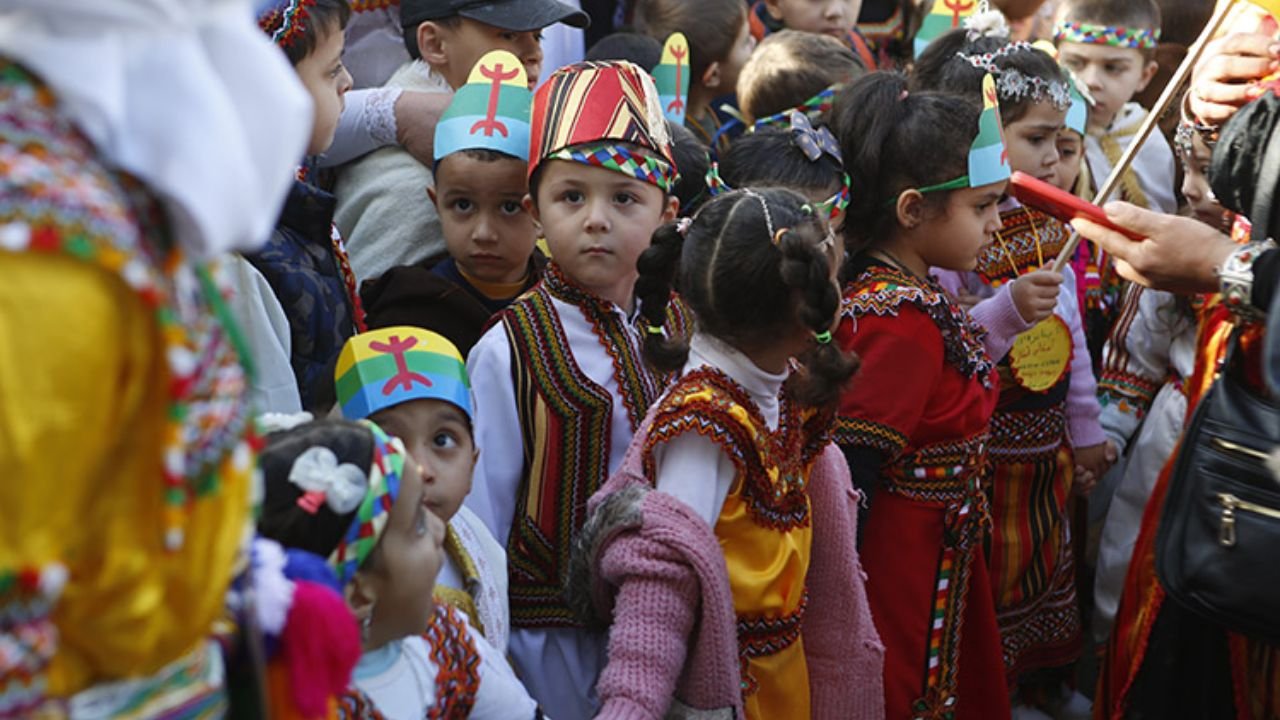The world is a tapestry of diverse cultures, each offering a unique perspective on life, history, and art. Among these, the Amaziğ culture stands out for its rich traditions and vibrant history. Often referred to as Berbers, the Amaziğ people have carved a distinct identity across North Africa. This blog post aims to take cultural enthusiasts and history buffs on a captivating journey through the intricacies of the Amaziğ culture, from its origins to its contemporary challenges.
Introduction to Amaziğ People and Culture
Brief History and Origins
The Amaziğ people, indigenous to North Africa, boast a history that stretches back thousands of years. Traditionally referred to as Berbers, they prefer the name Amaziğ, which means “free people” or “noble men” in their native language. Their origins trace back to prehistoric times, with historical evidence suggesting they have been present in the region for at least 4,000 years. Their resilience and adaptability have allowed them to maintain a distinct cultural identity despite various foreign invasions and influences over the millennia.
Geographical Distribution
Geographically, the Amaziğ people are spread across several countries in North Africa, including Morocco, Algeria, Tunisia, Libya, and parts of the Sahara Desert. Each region has its own dialect and customs, yet they share a common cultural thread that binds them together. Moroccan Amaziğ, particularly in the Atlas Mountains and the Rif, have maintained a strong presence, with their culture playing a pivotal role in the country’s national identity.
Language and Literature
Overview of the Amaziğ Language
The Amaziğ language, also known as Tamazight, is an Afro-Asiatic language with several dialects. Despite historical attempts to suppress it, the language remains a vital component of Amaziğ identity. In recent years, efforts to revive and promote Tamazight have gained momentum, with Morocco and Algeria officially recognizing it as a national language.
Significance of Oral Tradition and Written Literature
Amaziğ culture places a significant emphasis on oral tradition, with storytelling serving as both entertainment and a means of preserving history. These stories often revolve around legendary figures, historical events, and moral lessons. In addition to oral literature, the Tifinagh script—used for written Tamazight—has seen a resurgence, with educational institutions increasingly incorporating it into their curricula.
Cultural Traditions and Festivals
Analysis of Significant Traditions and Customs
Amaziğ traditions and customs are rooted in a deep respect for nature, family, and community. Traditional music and dance, such as the lively Ahidous and the rhythmic Ahouach, are integral to social gatherings and celebrations. These performances often involve participants forming large circles, with synchronized movements and chants that evoke a sense of unity and harmony.
Highlighting Major Festivals and Their Importance
Festivals hold a special place in Amaziğ culture, serving as opportunities for communal bonding and cultural expression. The Yennayer, celebrated in January, marks the Amaziğ New Year and is a time for feasting, dancing, and reflection. Another significant festival is the Imilchil Marriage Festival, a unique event where young men and women gather to find potential spouses, maintaining an ancient tradition of arranged marriages.
Arts and Crafts
Exploration of Traditional Arts, Including Textiles, Pottery, and Jewelry
Amaziğ art is a vibrant testament to the creativity and skill of its people. Traditional crafts such as weaving, pottery, and jewelry-making have been passed down through generations. Richly colored textiles, adorned with geometric patterns, are a hallmark of Amaziğ craftsmanship. These intricate designs often carry symbolic meanings, reflecting aspects of Amaziğ spirituality, history, and identity.
The Role of Amaziğ Art in Cultural Preservation
Art plays a crucial role in preserving Amaziğ culture, providing a visual narrative of their history and values. Through art, the Amaziğ people express their connection to the land and their ancestors. Efforts to promote Amaziğ art, both locally and internationally, continue to thrive, helping to safeguard their cultural heritage for future generations.
Social Structure and Beliefs
Discussion on Family and Community Structures
Amaziğ society is traditionally structured around extended families, with strong communal ties that foster cooperation and mutual support. Elders hold a revered position within the community, often serving as mediators and custodians of cultural knowledge. This social framework ensures the transmission of oral traditions and cultural practices across generations.
Insight into Religious and Spiritual Beliefs
Historically, the Amaziğ people practiced a form of animism, venerating natural elements and deities associated with them. Today, Islam is the predominant religion among the Amaziğ, yet many pre-Islamic customs and beliefs remain interwoven with their spiritual practices. The fusion of Islamic and Amaziğ traditions creates a unique spiritual landscape that reflects their diverse heritage.
Contemporary Challenges and the Future of Amaziğ Culture
Examination of Current Threats to Cultural Preservation
Despite their rich cultural heritage, the Amaziğ people face several challenges in preserving their identity. Globalization and modernization have led to the erosion of traditional practices and languages. Furthermore, political and social pressures have historically marginalized their culture, leading to a struggle for recognition and autonomy.
Initiatives for the Protection and Promotion of Amaziğ Culture
In response to these challenges, various initiatives have emerged to protect and promote Amaziğ culture. Educational programs, cultural festivals, and advocacy groups play a pivotal role in raising awareness and fostering pride in Amaziğ identity. The digital age has also provided new platforms for the Amaziğ to share their culture with a global audience, ensuring their voice is heard far and wide.
You May Also Like: Dianaperuza’s Storytelling Legacy Across Cultures
Conclusion
The Amaziğ culture, with its rich tapestry of history, traditions, and art, offers a fascinating glimpse into the resilience and creativity of an ancient people. For cultural enthusiasts, history buffs, and travel bloggers, exploring the Amaziğ way of life is an enriching experience that deepens our understanding of North Africa’s diverse heritage. As we move forward, it is essential to support efforts that preserve and celebrate this vibrant culture, ensuring its legacy endures for generations to come.
FAQs
What does the term “Amaziğ” mean?
Amaziğ, meaning “free people” or “noble men,” is the preferred name for the indigenous people of North Africa, commonly known as Berbers.
Where are the Amaziğ people primarily located?
The Amaziğ people are primarily located in Morocco, Algeria, Tunisia, Libya, and parts of the Sahara Desert.
What language do the Amaziğ people speak?
The Amaziğ people speak Tamazight, which has several dialects and is an Afro-Asiatic language.
What are some significant Amaziğ festivals?
Significant Amaziğ festivals include the Yennayer, celebrating the Amaziğ New Year, and the Imilchil Marriage Festival.
How is Amaziğ culture being preserved today?
Amaziğ culture is preserved through educational programs, cultural festivals, advocacy groups, and digital platforms that raise awareness and foster pride in their identity.











